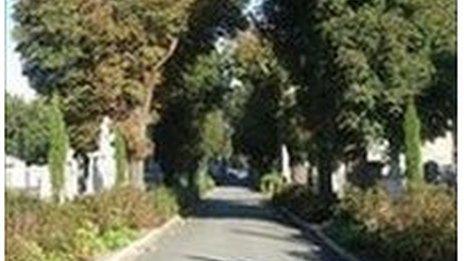Tuam babies: How a small field in Ireland held big secret
- Published
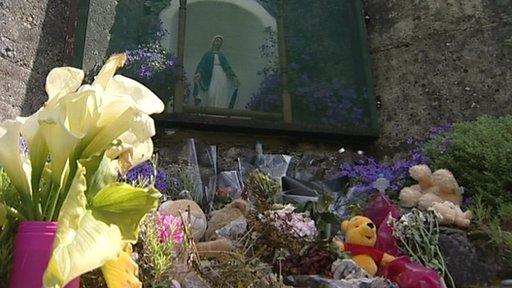
Flowers and teddies remember hundreds of children who are said to have been buried in the grounds of a Tuam home
Tucked away between houses on an estate in the Republic of Ireland is a small field that many believe, until recently, had a big secret.
Beneath a grotto of the Virgin Mary, lie flowers and teddy bears left by well-wishers in memory of the children of unmarried mothers, described at the time as "fallen women".
It is believed nearly 800 children are buried in the grounds of what was once a mother and baby home run by nuns in Tuam, County Galway.
A child died nearly every two weeks between the mid-1920s and 1960s.
After world-wide publicity, the Irish government announced there is to be a state-wide investigation.
Although the terms of reference of the inquiry have yet to be finalised, they will include the high mortality rate and burial practice at mother and baby homes.
The inquiry will also ask whether clinical drug trials were carried out on children and whether there were forced adoptions.
JP Rodgers was born in the Tuam home and has written two books about his forced separation from his mother
JP Rodgers was born in the Tuam home and has written two books about his forced separation from his mother.
She was put into care for begging when she was less than three-years-old and spent most of her life in Catholic Church-run institutions until she ran away to England when she was 34.
Her son was fostered when he was five and spent a happy time with his new family but his mother never gave up hope of them being re-united.
Eventually, after decades apart, they were reunited.
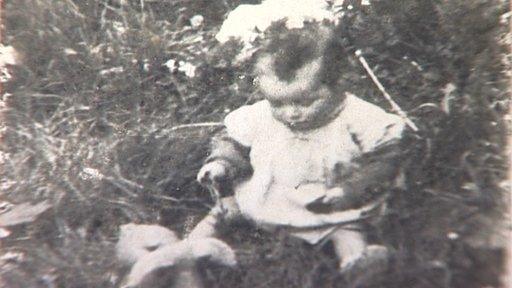
JP Rodgers, pictured as baby, was fostered when he was five
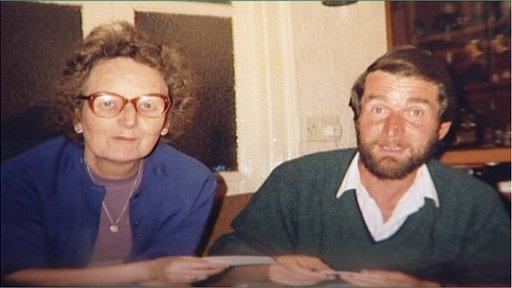
After decades apart, JP Rodgers was reunited with his mother
"The day we separated she cut off a lock of my hair as a keepsake and she vowed that no church or state would be able to claim her son as long as she kept his hair", he said.
"Growing up I knew there was something radically wrong with Irish society.
"It was wrong for any church to separate a mother from her infant. You can't commit a greater crime against humanity."
The Ireland at the time was anything but a true republic.
One faith, Christianity and the Catholic Church in particular, dominated so many aspects of life.
Sex outside marriage was more than just a sin. The domination of the church was one in which the state and the people at the time willingly colluded.
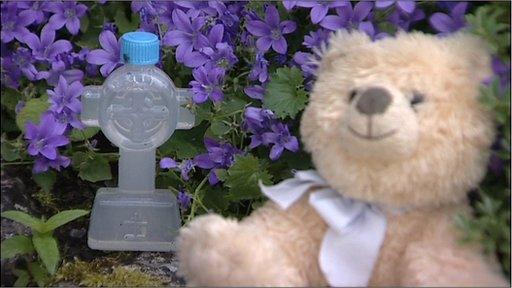
A poignant memorial to the little children buried in the grounds of the mother and baby home
The victims were not just women and young girls who got locked up because they were pregnant.
We now know from recent state reports they included children - the victims of institutional and clerical child sex abuse.
Dr Lindsey Earner-Byrne, an historian at University College Dublin, has studied the period and said the new Irish state set itself up as a bastion of Catholicism and moral purity in opposition to its former master, Britain.
But she said a high price was paid for that puritanical intolerance.
She said: "It was black and white and if you deviated you were ostracised. And one way of deviating was having sex outside marriage.
"So, women who did paid the highest price along with their children - and that was to be relegated to an institution or to take the boat to Britain."
The Tuam grave issue is something the people of the County Galway town have given a lot of thought to.
One woman said that as, a single mother, a midwife asked her whether she wanted to give her son up for adoption as recently as 22 years ago.
Another said: "The church got away (with it) for so long and it's not right".
But an elderly man took a different view: "We all knew about the home for unmarried mothers and pregnant ladies.
"The babies had to be buried somewhere. It was a sign of the times."
In this whole affair, little has been said about the role of men in fathering children outside marriage.
Others said we are seeing the past through the prism of the present.
But how much has changed?
Some might say: "Not much".
As recently as 2012, more than 100 children in Irish state care were reported missing in the five-year period up until then.
The Catholic Church has declined to be interviewed by the BBC.
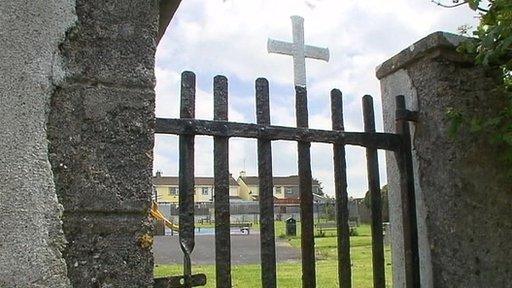
People in Tuam have given a lot of though to the issue of the grave
- Published8 June 2014
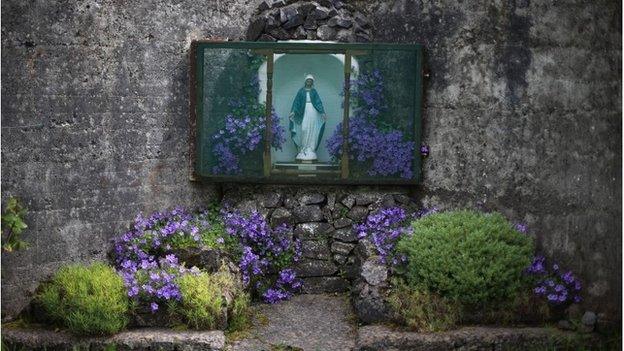
- Published6 June 2014

- Published6 June 2014

- Published5 June 2014

- Published4 June 2014

- Published3 June 2014
- Published3 February 2012
